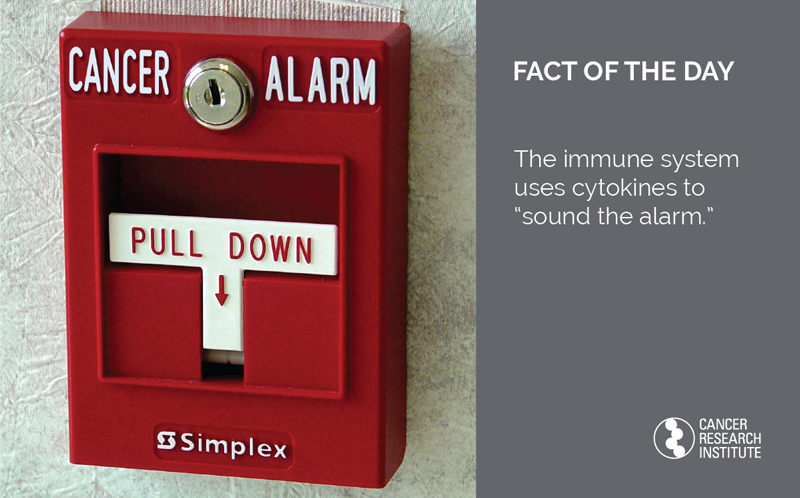
The immune system uses cytokines to "sound the alarm."
Like a well-trained fire station crew, the immune system can quickly spring into action at the “sound” of danger. Instead of alarms though, immune cell substances called cytokines (taken from the Greek words for cell and movement) trigger immune cell movement and get them where they need to be to respond effectively. Cytokines come various forms that can allow for responses against a variety of threats, including cancer.
In addition to affecting immune cells, cytokines can also act directly on other types of cells, both healthy and diseased. One cytokine, tumor necrosis factor alpha (TNF-α), was named (by Dr. Lloyd J. Old) for its ability to induce cancer cell death. TNF-α also plays important roles in responses to bacteria and viruses, helping to eliminate infected cells. Another cytokine, interferon gamma (IFN-γ), is an important stimulator of adaptive immune responses that are capable of targeting tumors with incredible precision. The activity of IFN-γ was crucial in the work of Robert D. Schreiber, Ph.D., that validated the immunosurveillance hypothesis.
Other CRI scientists who have made important contributions to our understanding of cytokines and immune cell migration include:
Image credit: Creative Commons (via Ben Schumin)